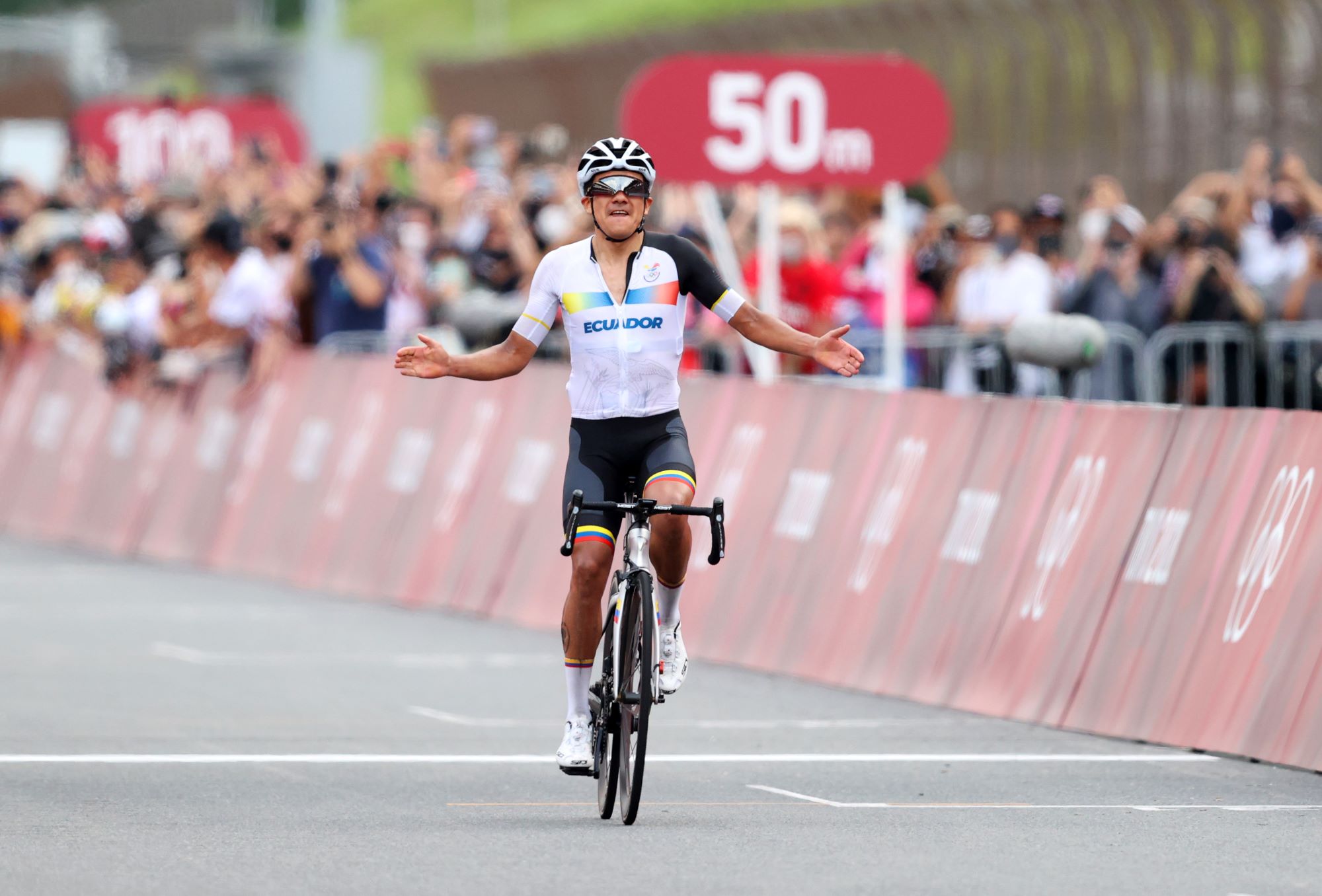
The road races take place at the Paris Olympics this weekend, marking the end of the first week of competition in the cycling events and the conclusion of the road racing action.
Taking place on Saturday, the men’s race will see the likes of Remco Evenepoel, Mathieu van der Poel, Julian Alaphilippe and double Olympic MTB champion Tom Pidcock go head to head in the battle for a gold medal.
24 hours later, it will be the turn of riders such as reigning female world champion Lotte Kopecky and Elisa Longo Borgini to compete for gold.
As is often the case in the Olympic road races - like the World Championships - the two events could play out differently compared to other races. There are smaller pelotons in each, but both promise barnstorming action no matter what.
If you're tuning in this weekend or are new to watching our sport, Cycling Weekly has looked to answer some key questions you may have in your mind.
Why aren't Tadej Pogačar and Jonas Vingegaard riding?
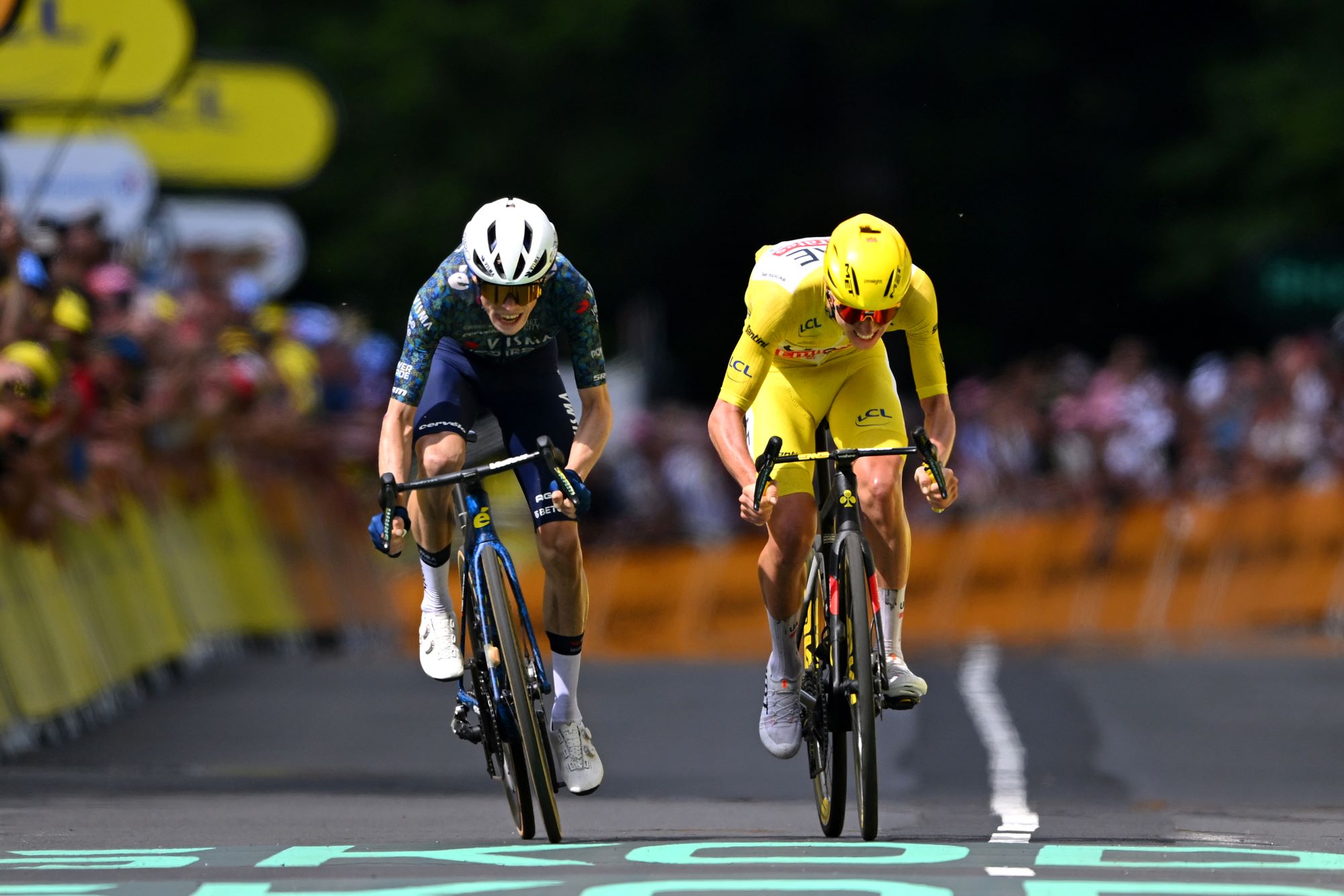
Looking at the peloton during the men's race on Saturday you may find yourself wondering why Tadej Pogačar, the winner of the Giro d’Italia-Tour de France double this year, isn’t present amongst the bunch, or double Tour champion Jonas Vingegaard. Aren't these the best riders in the world?
It's not that simple.
Everyone gets fatigued. Pogačar has already had one hell of a year with his two Grand Tour victories. Pogačar also had a hectic spring in which he won races like Strade Bianche and the Volta a Catalunya. The Slovenian pulled out of selection to give himself more time to rest ahead of his next goal, winning the road world title in Switzerland in September.
Pogačar also later said that he was withdrawing from selection for Slovenia in protest due to his girlfriend Urška Žigart, the reigning female national road and time trial champion, being sidelined by the national federation during the selection process, despite her impressive results.
Meanwhile Jonas Vingegaard wasn’t selected by the Danish federation. The course favours a punchier, classics style rider, something that the Dane isn’t. This year’s Tour runner up is much more suited to high altitude and longer climbs.
Why are riders on the same team on different bikes?
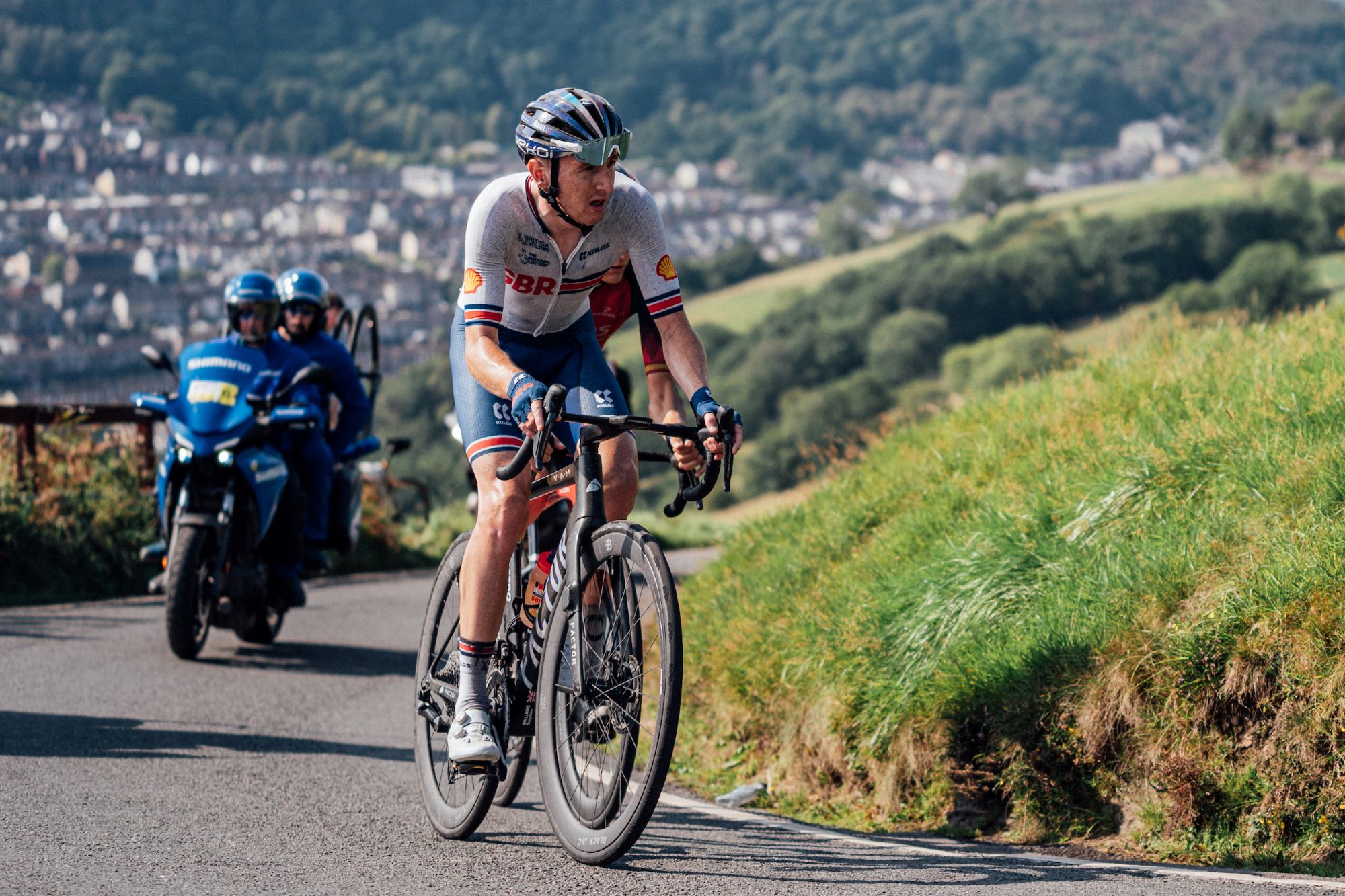
Unlike in a race like the Tour, you’ll notice that most of the riders on some of the biggest teams like Great Britain, France and Belgium are on different bikes to the rest of the teammates.
In the men’s Great Britain team alone you’ll see Tom Pidcock and Josh Tarling riding a Pinarello, Stevie Williams on a Factor and Fred Wright on a Merida. This is purely because riders competing for their national team will typically use their standard trade team issue bike that they ride during the rest of the season.
Except for in exceptional circumstances, national federations don’t typically supply bikes to riders during events like the Olympics. This is not just due to issues associated with things like sponsorship, but also because riders spend months riding their team machine and tweaking it to their own personal preferences in terms of measurements, equipment and other finer details.
As a result, it is simply not worth changing bikes for a national team event, even if that event is an Olympic road race.
Who is the Olympic road race champion?
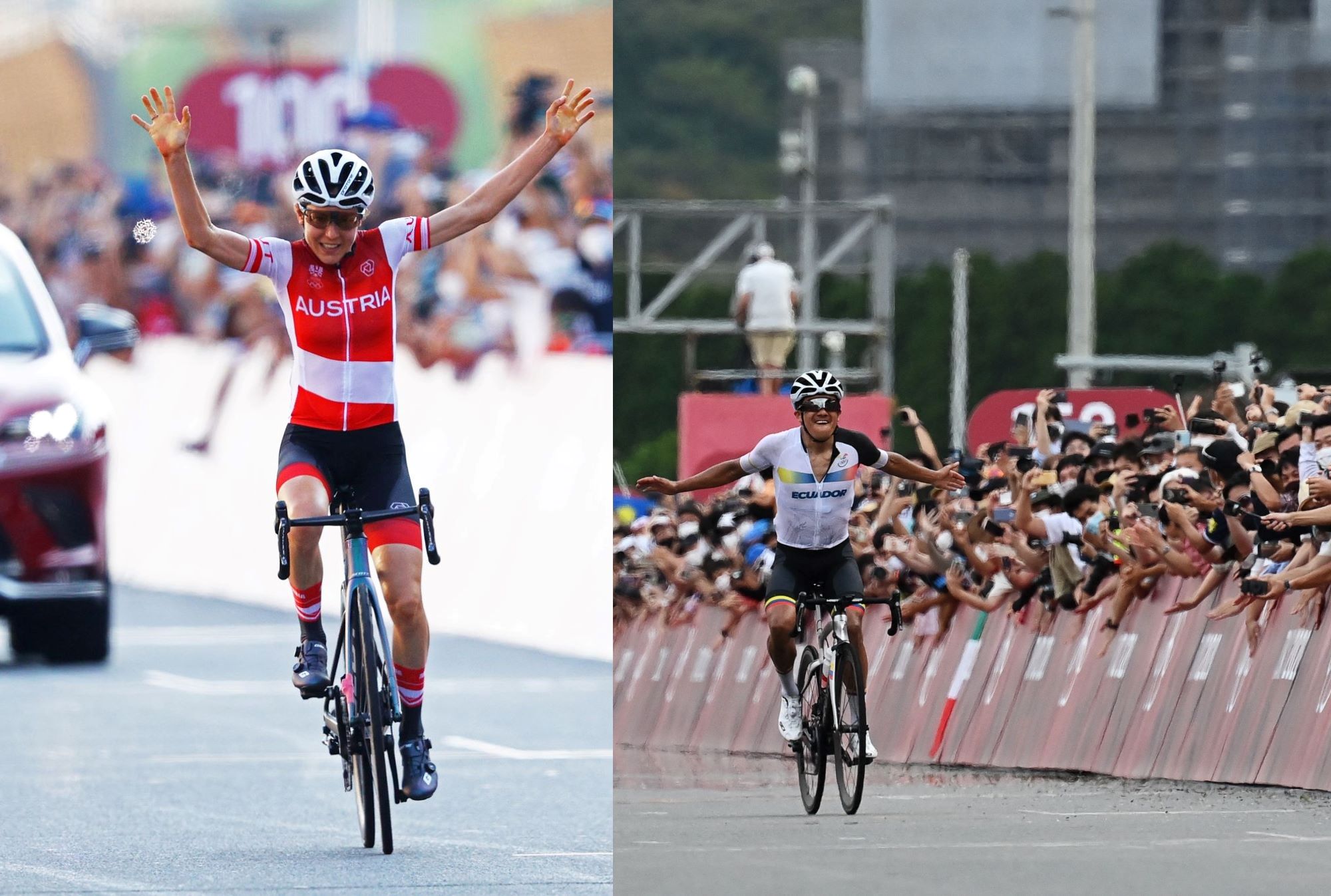
Richard Carapaz of Ecuador and Anna Kiesenhofer of Austria are the reigning champions.
Carapaz won in Tokyo in 2021 on a hilly course which ended on the Fiji Speedway Circuit, but surprisingly won't be in Paris to defend his title after he was left out of Ecuador's team selection. Ecuador opted to select Jhonatan Narváez instead.
Kiesenhofer is the reigning female Olympic champion after she won unexpectedly in Japan three years ago. The Austrian rider pulled off one of the biggest shocks ever seen in women’s cycling when she was part of a breakaway that went from the off and stayed away for much of the day.
Why does the end of the course look the same?
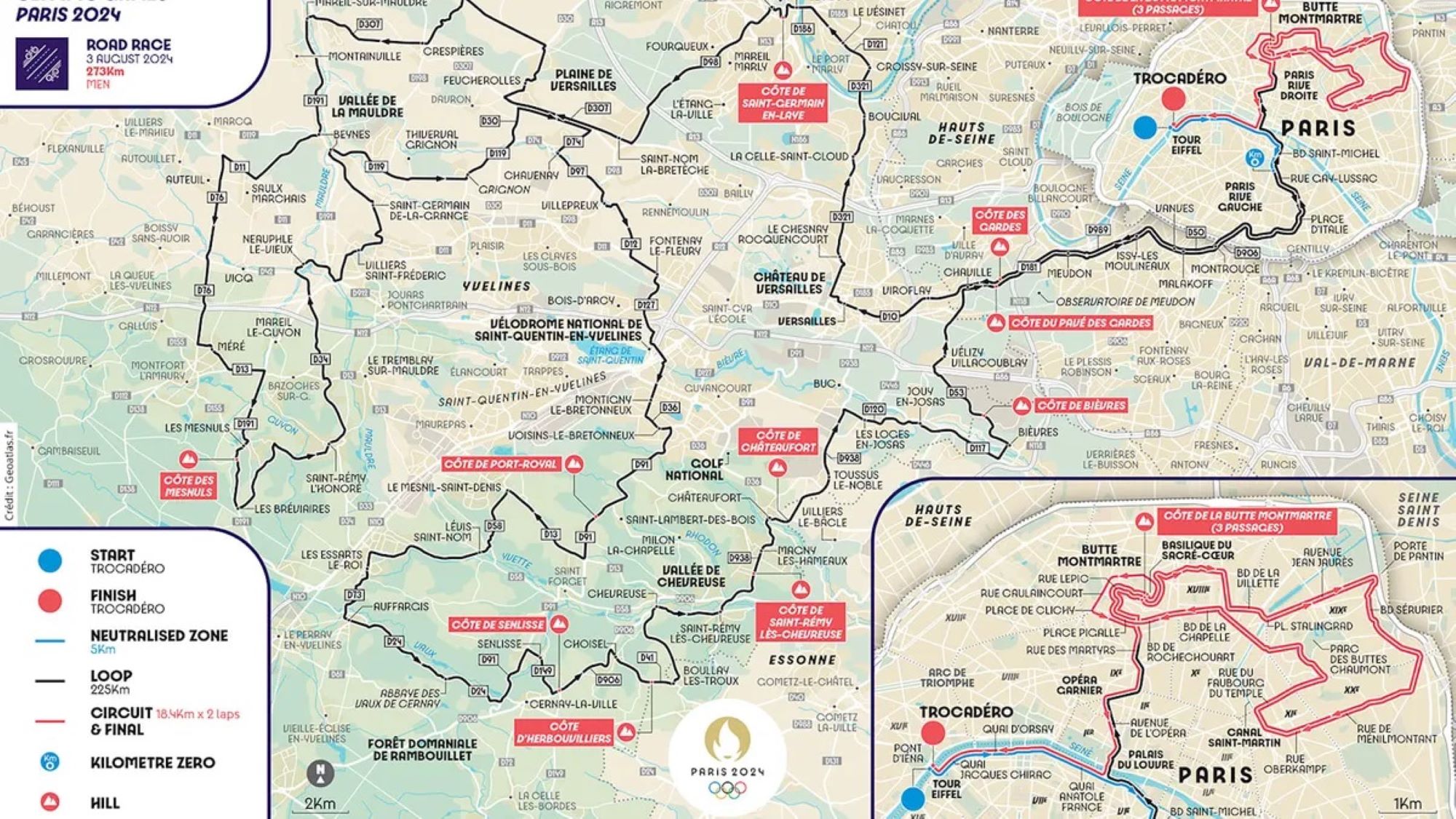
The final part of the course will be contested over a circuit within the centre of Paris near to the Montmartre district. Circuits are usually used at Championship races to make life easier for the race organisers, and the fans. It's not quite the same as a point-to-point stage of the Tour.
The first 200 kilometres or so of the men's event will see the riders do battle across a series of loops to the west of the French capital before heading back into the centre for the final sections.
The women’s race will take place on a very similar course, albeit significantly shorter at just 158 kilometres. The same finishing circuit will also be included.
If you’re watching on from home, you may find that the race has a similar feel to the road races at the Glasgow World Championships last summer due to the final inner city circuits.
Why is the peloton so small?
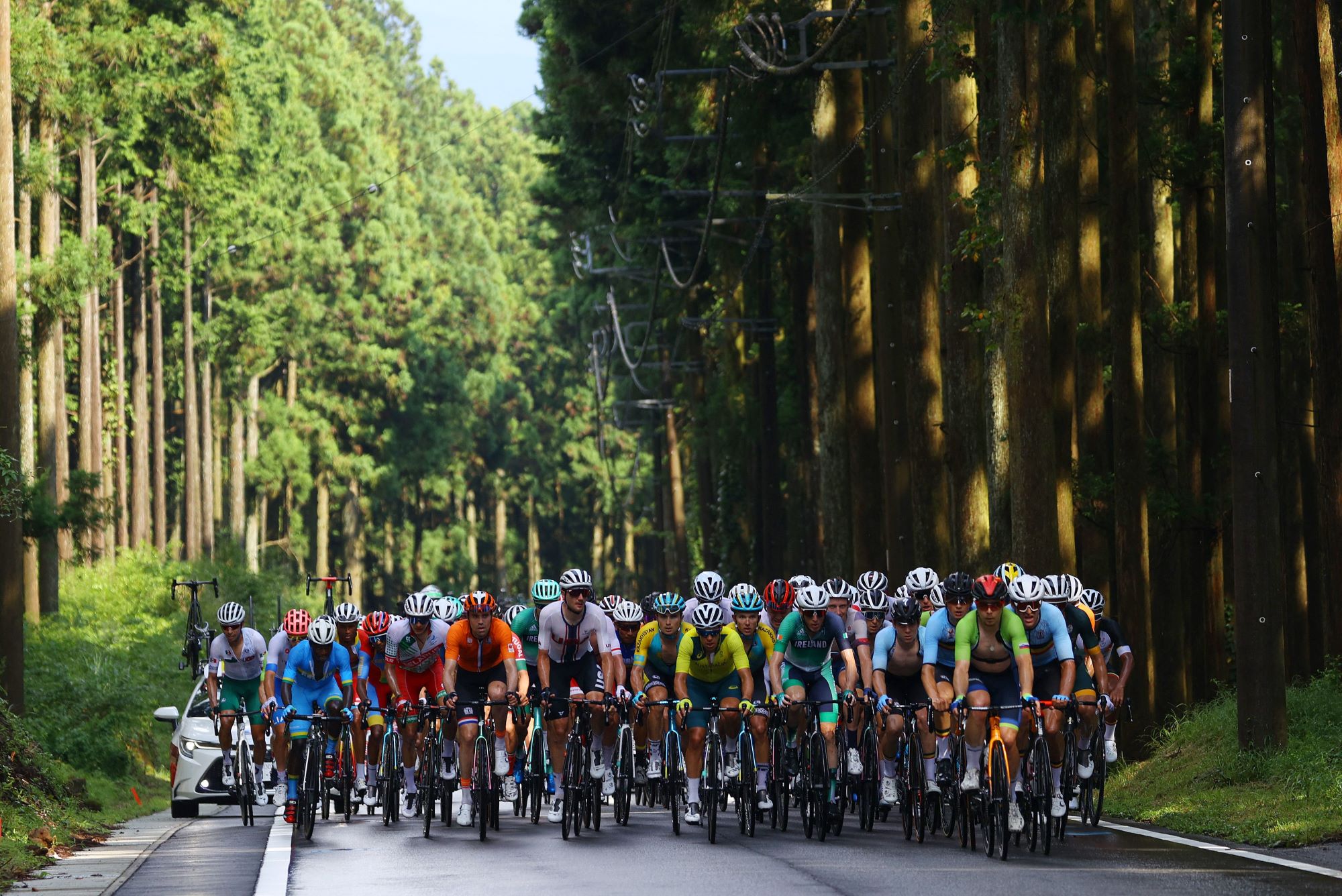
As explained by our news editor Adam Becket, the peloton for both races this weekend will appear significantly smaller compared to other major WorldTour races that we’re all used to watching during the rest of the year.
Just 88 riders are expected to line up for the men’s race and 95 for the women’s, a massive drop from the large pelotons of more than 150 riders that we would see elsewhere.
This is due to the International Olympic Committee capping the numbers of athletes competing at the games. Due to the usual large numbers of athletes competing in cycling events, it was inevitable that cycling is one of the sports impacted by this process.
Why does only one rider on the winning team get a gold medal?
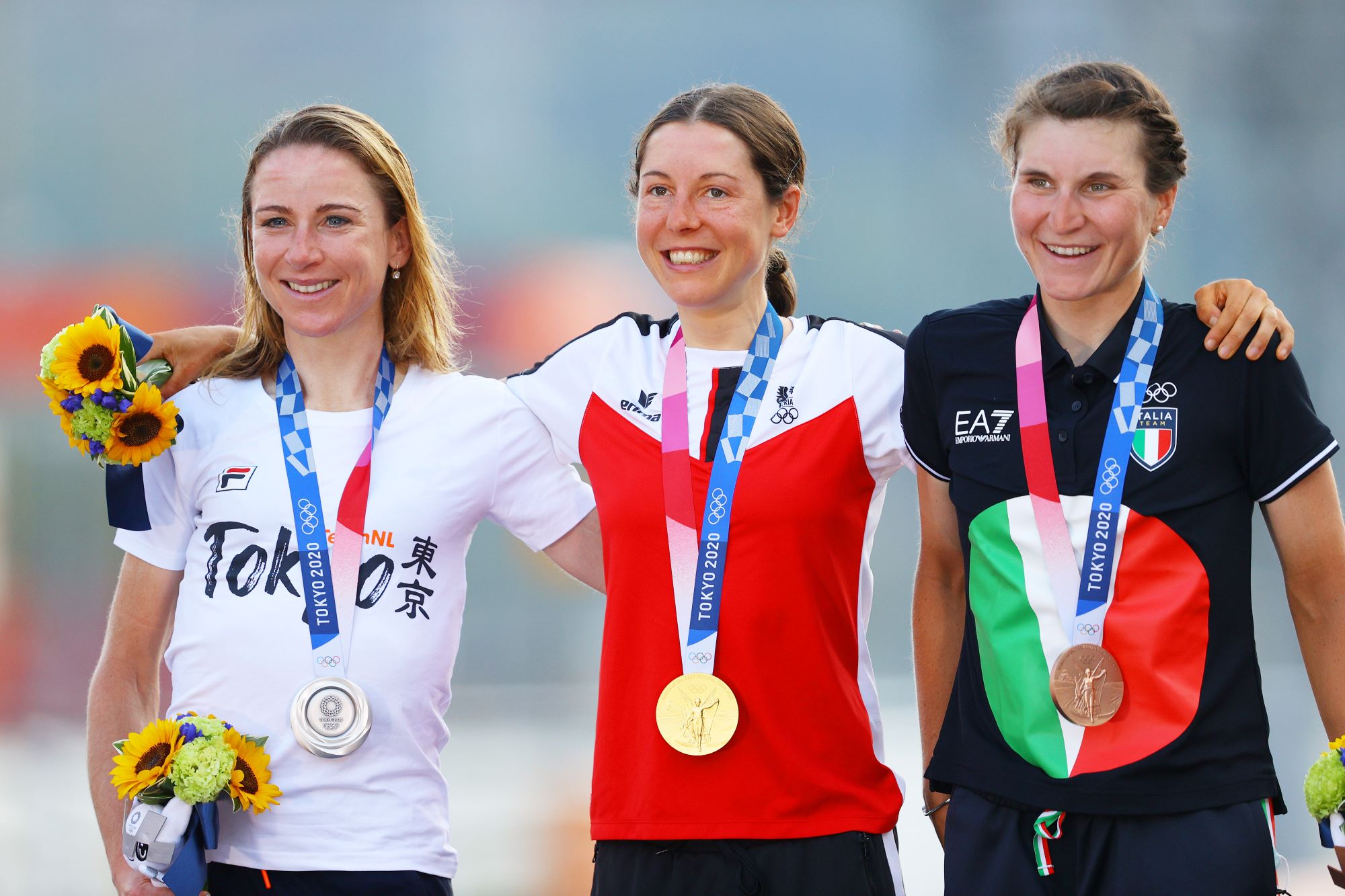
While road cycling is considered to be a team sport, the Olympic road races have only one winner, runner up and third place. Cycling is both a team sport and an individual sport at the same time.
Only the person to cross the line first in both races will be awarded a gold medal, even if other riders on their team have worked for them in order to help set up the eventual winners victory throughout the day. The same goes for the rest of the medal positions.
Whether that could be considered unfair is another question. The Olympics is the biggest stage of all in any sport, so after all, why should only one person on the winning cycling team receive the recognition of a gold medal? The fact is it is simply down to tradition in cycling and unlikely to change anytime soon.
Why are there no race radios?
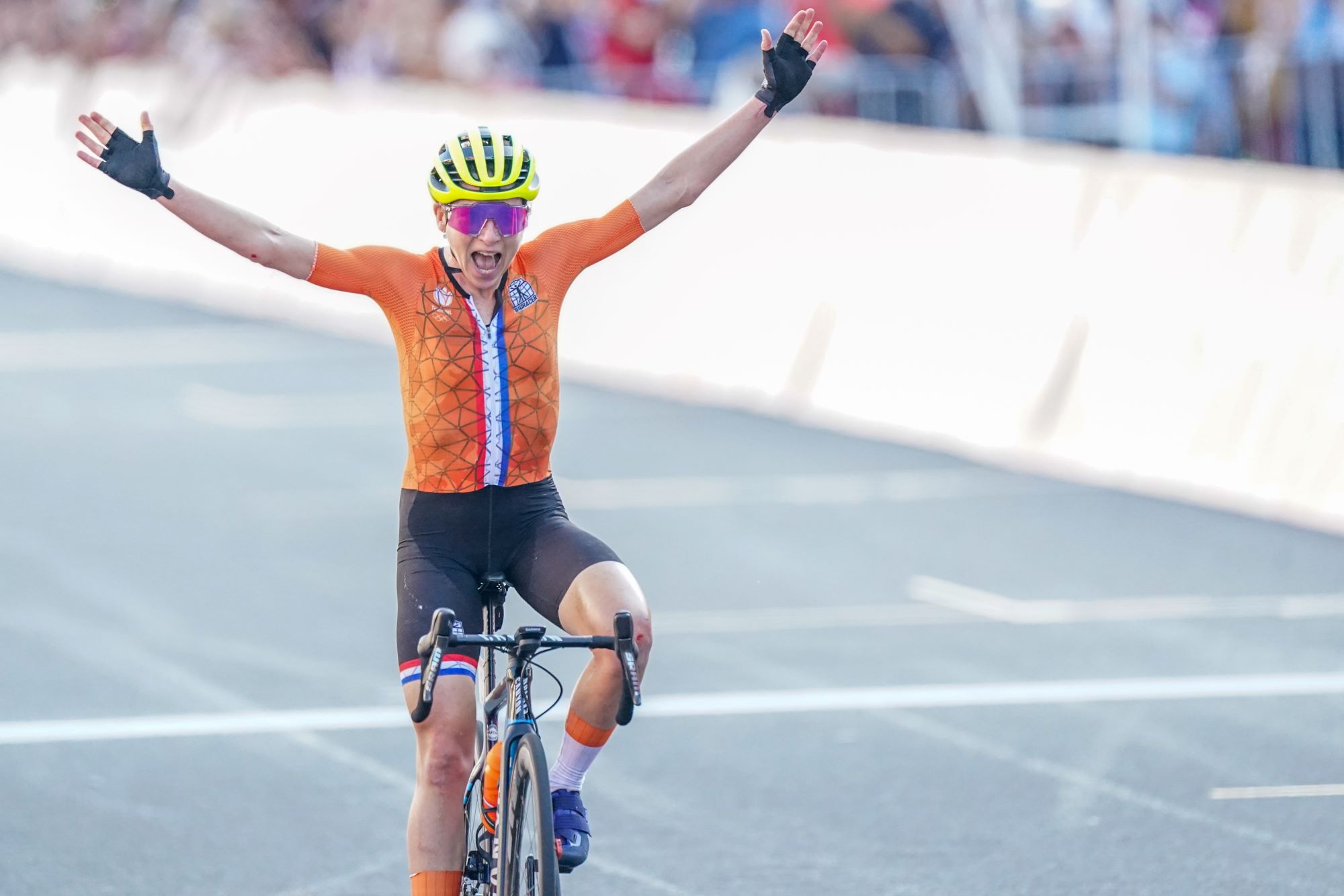
Race radios have never been used in events where riders are competing for national teams. While they are now ubiquitous elsewhere in modern day cycling, they have never been part of the peloton in either the Olympics, World Championships or other events like the Commonwealth Games.
The equipment was first introduced in the early 1990s into racing, and soon became part of nearly all of cycling’s major events, enabling sports directors to pass on tactical advice and other key information to their riders. However, because these races are so different, and raced in national teams, they've never been used.
Their absence should make for a less controlled, more chaotic race.
Why do some teams have more riders than others?
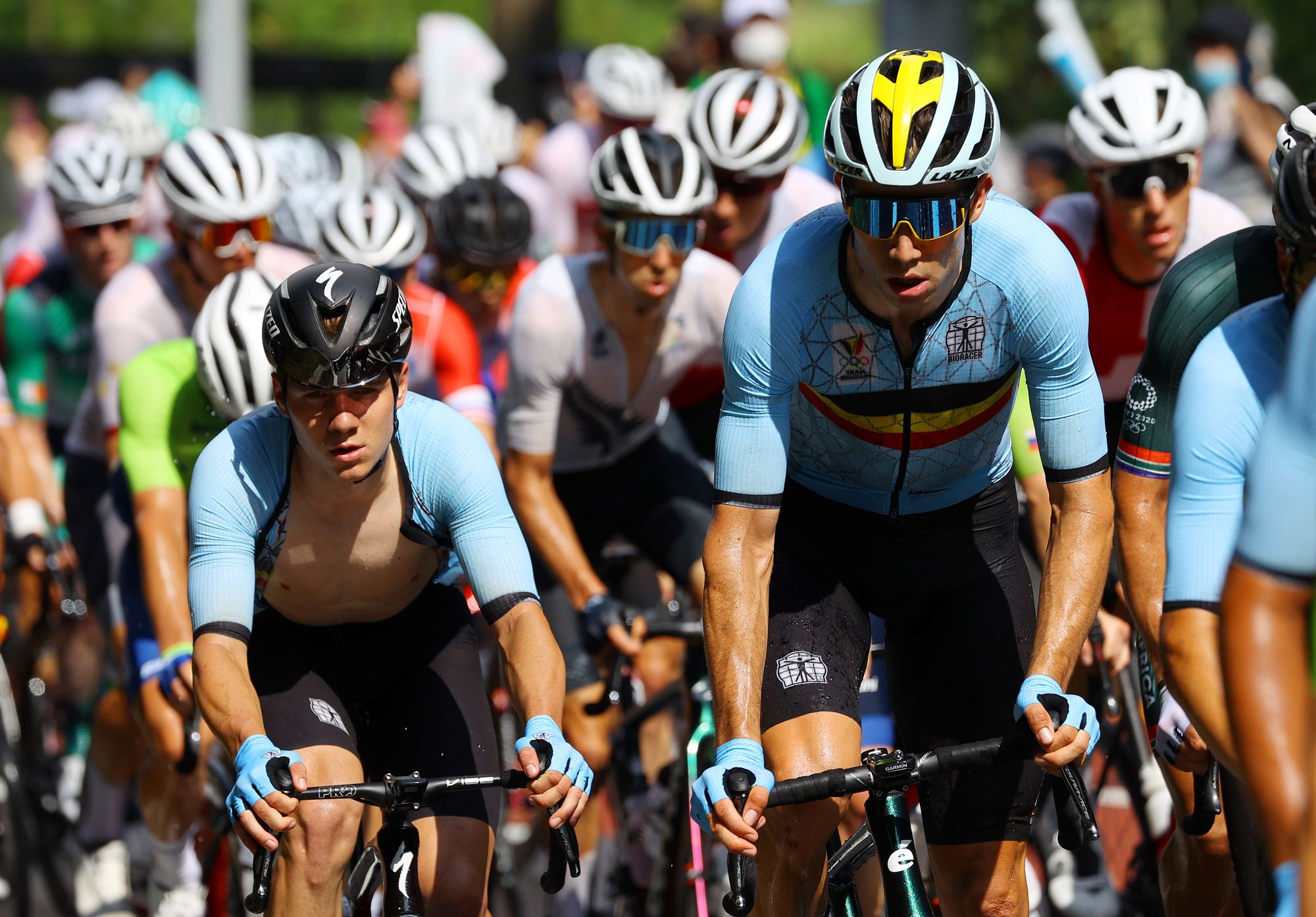
The number of riders in the individual teams depends on the UCI rankings from the previous season. If a country has more ranking points than another, it will often mean that the national federation in question can then select more riders than a team like Eritrea for instance who can only select one rider - Biniam Girmay. Meanwhile, Belgium get four.
The rankings are taken from a country's eight best raiders during the course of a year.
The top five nations have four riders, the next five have three, and the next ten highest ranked nations in the field are granted permission to ride with two riders with the following 25 receiving one spot from the IOC.
How does rider selection work for the two events?
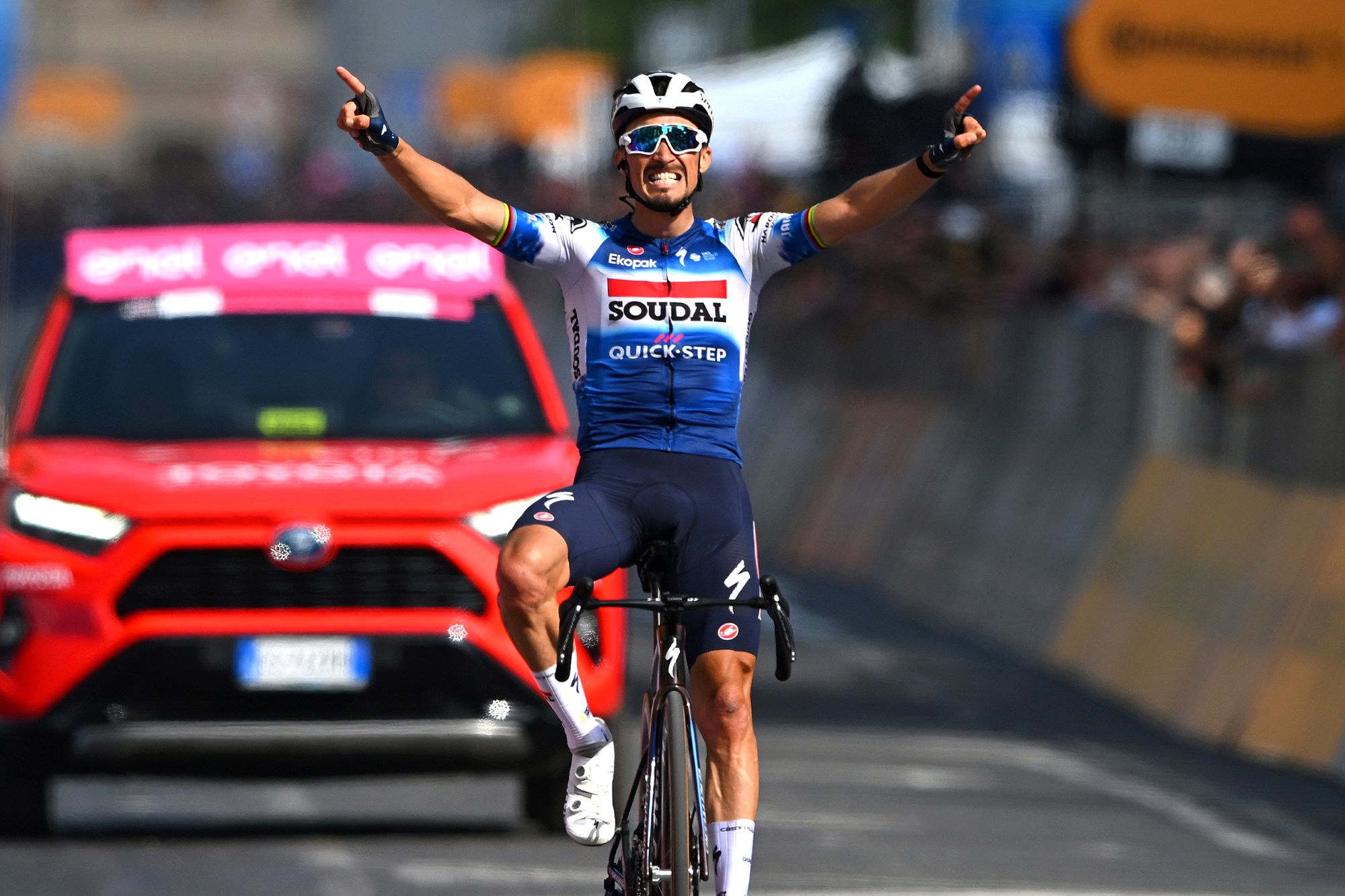
It would be easy to come to the assumption that the selection process for the games comes down to points or a similar form of ranking within each individual national federation. But this isn’t the case and it is a lot simpler than it may seem.
Team selection is largely made by looking at the course and how that suits particular riders, the wider team makeup, rider availability and a little bit of good old fashioned politics. Largely though, everyone making the decisions around the world wants to give their riders the best chance possible of one of them winning gold. As a result the first point is usually the most important.
The course in Paris favours Classics-style riders with its punchy, short and sharp hills and technical sections within the city streets of Paris in the closing stages. Riders in good form this season are favoured over big names who might not do as well.
Of course, the more riders you have available at your disposal the easier team selection then is. There is also a bit of politics involved, for good measure, especially if teams only have one or two slots to play with.







